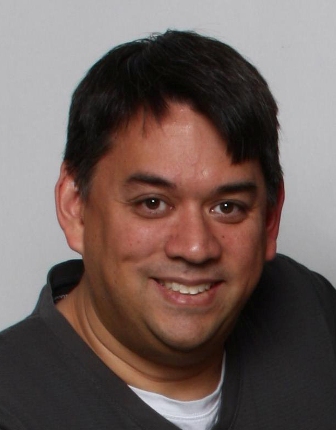Digital Rapids—Mike Nann, Dir. of Marketing/Communications
Q. What broad technology trends do you think will be front-and-centre at IBC2012?

Over-the-top (OTT) is certainly going to be front-and-centre at IBC, although for us, as a provider of solutions and technology for multiplatform video experiences, it’s been front-and-centre long before now. At a higher level, one of the most important trends stems from the intersection of business and technology—the need for media organisations to increase their operational efficiency in order to thrive in a consumer-driven, multiscreen world. Consumers are adopting expanding media options at a staggering rate, leaving content and rights owners faced with the challenge of how to efficiently match the scale of this opportunity while controlling or reducing costs. Our new workflow technology platform and solutions are designed with exactly these factors in mind.
Q. Any thoughts on how the current economic climate will affect the show?
While economic conditions may affect the timelines for projects that attendees are planning and researching at the show, we’re expecting another great IBC. The economic pressures facing media organisations require them to re-evaluate their operational models, and the technology solutions that power them, as they strive to increase their operational efficiency and reduce their costs while still capitalising on the expanding opportunities in front of them. Our solutions are ideal to help customers meet these goals.
Q. What’s new that you will show at IBC2012 and that broadcasters should look for there?
We’ll be showing enhancements across all of our live and on-demand media transformation solutions, but the biggest news is the IBC debut of our Kayak dynamic workflow platform. The same technology foundation powering our new solutions such as Transcode Manager 2.0 for end-user applications, Kayak is available as a comprehensive workflow technology platform for customers, systems integrators and software developers. Kayak enables them to design, deploy and manage customized workflows that empower their businesses with the operational efficiency, agility and insight they need to thrive in the expanding multiscreen media landscape.
Q. How is your new product offering different from what’s available on the market?
The professional video industry's #1 source for news, trends and product and tech information. Sign up below.
The differentiators are too numerous to delve into in depth here—visit us at our stand to learn more!—but in short, Kayak takes a fresh, innovative approach to workflows that streamlines operations and lets customers more easily harness technology from both ourselves and a rich third-party partner ecosystem. Unlike workflow solutions that orchestrate between separate applications, Kayak features exceptionally fine-grained modularity with technologies and functions as building-block components that give users greater control, agility and efficiency in their workflows than ever before. Meanwhile, Kayak’s seamless blending of workflow management, analysis and processing functionality provides outstanding automation “intelligence” that streamlines efficiency, while its dynamic, on-demand deployment brings cloud-like elasticity to on-premises operations.
Q. Last year I asked whether 3D was Hope, Hype or In Between. This year I want to know similar thoughts on “social media and broadcasters.”
In between, but done properly, far more to the “hope” side—and for so-called “traditional” broadcasters, a necessity in staying relevant and compelling to today’s prime audience targets. For the new generation of media consumers, social media is a basic communication staple and an intrinsic part of their lives. Newer viewing platforms such as OTT services have embraced social media from their beginnings, enabled by the interactive capabilities offered technically by IP-based platforms, but also in recognition of the benefits of social media for content discovery and building a community following. Broadcasters must similarly embrace social media to compete with these alternative platforms, but it has to be more than just a “bolt-on” to say they’ve done it—audiences will see through that. And the competition isn’t just between viewing platforms, it’s also for consumers’ attention overall. Would you rather compete for consumers’ time with their social media conversations or be part of them?
Q. Where are you based, and how many employees do you have? Anything else we should know about your company?
Our headquarters are in Markham, Ontario, Canada – just a few minutes North of Toronto, with additional offices in the United States, the United Kingdom, Hong Kong, Argentina and Australia. We’re continuing to grow, with nearly 100 employees. We celebrated our 10th anniversary last year, but our pedigree goes well beyond that, with key management and R&D personnel each having more than 20 years of experience in the broadcast, post-production or digital media domains—experience that we leverage into innovative, yet practical, solutions developed specifically for the demands of today’s diverse media environments.
Q. How many years have you been going to the IBC show and what’s your fondest memory? What’s your favourite restaurant or pub?
This will be Digital Rapids’ tenth year of exhibiting at IBC. Each year has its own highlights for me, but one that stands out is winning the IBC Innovation Award in 2008 for our work with NBC Universal—not only for the award win itself (we’ve won numerous prestigious awards since then and previously), but for its recognition of how our technologies contribute to our customers’ success. It’s hard to pick a particular favourite restaurant or pub, but the Old Bell has been a recurring stop over the years; and The Guru of India has been high on the list for the past couple of years.
